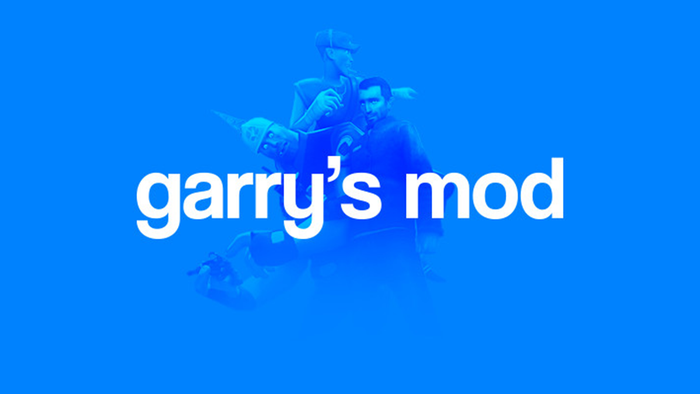
Featured Blog | This community-written post highlights the best of what the game industry has to offer. Read more like it on the Game Developer Blogs.
Another very misunderstood yet over used metaphor from game design that we use in gamification, is Bartle's Player Types. What follows is an attempt to create something similar to Richard Bartle’s player types, but for gamified systems.

Also check out the expansions of User Types
Another very misunderstood yet over used metaphor from game design that we use in gamification, is Bartle's Player Types. What follows is an attempt to create something similar to Richard Bartle’s player types, but for gamified systems.
It should be noted that this was not an exercise in recreating Bartle's work, or bending his work to fit with gamification - it started as the exact opposite. However, after conversations with Bartle and a little help with the initial categorisation, we have what we have here. Read on!
What’s it all about Richard?
For those that don’t know, Richard Bartle labelled players as one of four types (initially) to help him understand how they interacted with each other and their environments in MMO games (Massively Multiplayer Online). The labels he used were;
Killer
Achiever
Socialiser
Explorer
Quoting straight from the original text, here is a brief explanation of each of these (very, very brief)
Players use the tools provided by the game to cause distress to (or, in rare circumstances, to help) other players. Where permitted, this usually involves acquiring some weapon and applying it enthusiastically to the persona of another player in the game world.
So, labelling the four player types abstracted, we get: achievers, explorers, socialisers and killers. An easy way to remember these is to consider suits in a conventional pack of cards: achievers are Diamonds (they’re always seeking treasure); explorers are Spades (they dig around for information); socialisers are Hearts (they empathise with other players); killers are Clubs (they hit people with them).
If you want to know more, have a look at his original text http://www.mud.co.uk/richard/hcds.htm
A Flawed Metaphor for Gamification
After speaking with Richard and exploring others use of his player type theory (Amy Jo Kim’s Social Player Types is a very good reworking), it becomes obvious that as a metaphor for gamification, it is useful but flawed. At the end of the day, gamification is not the same as MMORPG’s – the thing that Bartle’s Player Types is designed for (and of course works well for!). There is one massive assumption. In pure games, your players WANT to play. In a gamified system, that is not always going to be the case. Also, gamification does not generally include much in the way of gameplay.
As I see it, we need to take a step back and start from just two types of users initially. Those willing to “play” and those not willing to play. Here, when I say play, I mean those who can be engaged with the extrinsic things like badges and trophies. To many, this is of no interest at all. However, that does not mean you cannot create a system that will engage them as well. You just have to think about it.
Do You Want to Play a Game?
Concentrating on the intrinsically motivated users, there are four basic types. For now, we will consider those who are extrinsically motivate as a fifth type, that I will expand on later.
Player (Those motivated by extrinsic rewards)
Socialiser (Those motivated by relatedness)
Free Spirit (Those motivated by autonomy)
Achiever (Those motivated by mastery)
Philanthropist (Those motivated by purpose)
All of these five user types can be strongly influenced (though it does not have to be exclusively) by one of the four intrinsic motivators I have previously mentioned, or by extrinsic rewards.
The diagram below shows how this looks.

My User Types in more detail
Players are the ones who like to get the achievements in your system; they like to see their names on the leaderboards. They like the “game” of it all. They are also the most likely to make use of “loop holes” to gain an advantage. They are a group of user types in their own right, Bartle’s Player Types cover them very well though! There to play the game and are happy with the extrinsic rewards.
Socialisers (as in the original Player Type) are the ones who want to interact with others. They like to be connected to others. They are interested in parts of the system that help them do this. These are the ones will evangelise your internal social networks. Most motivated by the social connections aspects of relatedness.
Free Spirits like to have agency. They don’t want to be restricted in how they go through their personal journey. They will be the most creative, have the fanciest avatars, create the most personal content, but also like to explore. Likely to find the most holes in a system. They seek self expression and autonomy.
Achievers are the ones who want to be the best at things, or at least be achieving things within the system. They want to get 100% on the internal learning system. They do this for themselves and are probably not that bothered with then showing off to others about it. (This differs from the original definition, but I could not think of a better word!!). Will compete with others, but as a way to become better than others. The system provides the platform, other "players" are just things to be overcome and mastered. May also be motivated by status as a representation of their personal achievement They need a system that will enrich them and lead them towards mastery.
Philanthropists want to feel that they are part of something bigger. They want to give back to others. These are the ones who will answer endless questions on forums, just because they like to feel they are helping. They want a system that allows them to enrich others and feel a sense of purpose.
There Can be More than One
As you can see, those willing to “play” can fall into any one of the five categories (or any combination of the five). However (obviously), they are the only ones who will fall into the player type. Those who are not willing to play the game of collect the rewards and climb the leaderboard, can still be motivated and engaged, you just have to try harder and be less obvious. That said, if you look at it – you still have the most powerful intrinsic methods available.
It is easy to see that each type of user will need different types of motivation within your system. It goes again to show that you have to cater for everyone, not just the players with a points and badges system. This is likely to cater only for the smallest number of people.
Now, as I said, Richard Bartle offered some advice after reading this, he suggested another way of visualising the intrinsically motivated users.
For this, we will ignore the player user type, concentrating instead on the intrinsically motivated groups. Richard helped me to see that these types follow a simple pattern.
Philanthropists and Free Spirits both prefer to act within a free and unstructured environment.
Achievers and Socialisers tend to need a structure around them.
Socialisers and Philanthropists are not looking to gain anything material from the system. They are there (as Richard describes it) for the warm fuzzy feelings they get from engaging with or giving to others.
Achievers and Free Spirits are there for varying degrees of personal gain. Not in bad way though. Achievers are interested in improving and gaining understanding. Free Spirits want to be able to create and use the system to best suit them.
MY USER TYPES, WITH A DASH OF RICHARD BARTLE’S ADVICE AND EXPERIENCE.

At this point I realised that in trying so hard to not follow the work that Bartle had already done, I was in fact crippling my categorisations.
What’s in a word?
As I mentioned before, the “player” type is a categorisation in its own right. In theory, you could settle for calling just combining player with any of the other four types, calling them; Player Achiever, Player Socialiser, Player Free Spirit and Player Philanthropists – believe me, I wish I had! However, as with all good systems, it helps to have names you can visualise and connect with behaviours. So, I have come up with the following. Oh and I can’t stress enough – this is not a theory, this is a categorisation.

Then there were Eight
This leaves us with eight user types, four intrinsically motivate and four primarily extrinsically motivated. The next step is to look at what these eight types are acting on, in our gamified system. Bartle’s original axes help here; in fact, it was my effort to avoid using them that was causing me so many problems. They describe whether a player is interacting with or acting on people or the virtual world. This gives us two diagrams to help visualise this. The first describes the intrinsically motivated users, the second the extrinsically motivated.


Philanthropists: Seek a sense purpose from a system (e.g. answering questions on Quora, contributing to Wikipedia).
Achievers: Seek enrichment and mastery from the system (e.g. learning systems, being best at tasks, being better than others in the system).
Socialisers: Seek interactions and relatedness with other people (e.g. engaged social media users).
Free Spirits: Seek autonomy, exploration and creativity in a system (e.g. customisation of environment, avatar, journey).
Self Seekers: Seek rewards from acting on others (e.g. answering peoples questions just for points. Quantity over Quality).
Consumers: Seek to get rewards from the system with little interaction (e.g. loyalty schemes, basic competitions).
Networkers: Seek to connect to others to increase their profile and the rewards that may bring (e.g. Klout obsessive’s).
Exploiters: Seek to gain reward from using the system, possibly by any means (e.g. creating things, finding things, liking Facebook pages for prizes, finding the loopholes that help them win).
As you can see, within the Player User types there may well be some crossover of motivation. Consumers and Exploiters may share many of the same traits. The difference is, exploiters will try to find the boundaries of the system and how that may benefit them – consumers just want to get their reward with as little action from them as possible. As their motivation is all about reward, they will all compete with others if needed. Not to be better, but to get the reward.
Possible Interactions
All of these different user types have the potential to affect each other in your system.
For example, Philanthropists are the parent figure. They are the ones who are likely to want to help anybody they can, no matter of the other person�’s motives. Exploiters, on the other hand, will make use of anyone and everything they can to get personal gain from the system.
Socialiser and Networkers will wish to interact with people. Neither will be after anything from people directly. In the case of a networker, their reward comes from being connected; where as the socialiser’s reward is knowing you and interacting with you.
Self Seekers have no real interest in in the people within a system, they are just a means to an end (that end being the shiny shiny things). In a similar way, Achievers� are not there for the people, they are there for self enrichment. The big difference here is that the Self Seeker is the one who will collect badges and trophies in a system to show off their expertise to others. The Self Seeker is very similar to the Bartle Achiever player type!
Free Spirits and Consumers have the least impact on any of the other users. Their interests are purely personal, using the system to get what they want from it. Other users are of no direct interest to them.
Putting it together visually
I could call this, making a pretty picture that looks like Bartle’s full eight Player Type model!
All of this can be represented in a sort of ’3D’ / TriDimensional version of our two Acting On diagrams from earlier.

How do you create a balanced system for all types of users?
The answer is, with great difficulty and it depends on the goals of your system. However, if you go back to when we just had five user types, Player and then Philanthropists, Socialisers, Achievers and Free Spirits, it becomes a little clearer.
Create a system that appeals to the four basic intrinsic motivations and user types. Make it social, make it meaningful and give people some freedom. Then, integrate a well thought out reward system (points, badges etc.). If you do it this way around, you are not creating a system that relies on the rewards to run. That way, you get the intrinsically motivated people anyway and those that are there for rewards are catered for.
Next, looking a little deeper, the eight types of users can help us decide how to balance the system. It is important to keep in mind that you want more of the intrinsically motivated users if possible. These are the ones who will keep coming back, keep producing content or whatever else they are meant to be doing.
If the system is flooded with Self Seekers and Exploiters then you stand the chance of devaluing everything. Self Seekers run the risk of generating lots of meaningless content whilst exploiters will reduce the value of things like upvotes and likes if the rewards are badly implemented.
Philanthropists and Achievers can both help a system thrive. Philanthropists want to help everyone. They want to answer questions and guide users. Achievers, depending on the type of system, may also wish to do the same. They are interested in being the best – at mastering things. They will want to give the best answer to a question, not so much to help the user, but to know they were the best. However, as their main aim is self-enrichment, they can also give very little back to as system aimed at teaching – which may be just what you want!
Free Spirits and Consumers tend to give very little back to the people, consumers especially. Too many of either of them and the social aspect of your system stands a good chance of not working. It is possible that consumers are all you want (with a loyalty scheme), but it is worth considering you can get greater value from engaging everyone else.
Socialisers are great for evangelising a system and bringing more people too it, however, they don’t add content to systems as much as other types. Networkers are similar, whatever their motivations may be. However, networkers will bring in anyone, not just relevant people. Too many of them and the social aspect of the system can become diluted. Look at users on twitter with 30,000 “friends” then look at what content these friends actually generate. The likelihood is that of these 30,000 people, they only interact with a tiny fraction – so will other users.
A few final thoughts
First, I was asked if I could give a few ideas on how to support different user types. The image below was my attempt to assist.

Also (to satisfy a question I have had), exploiters are the most likely to “cheat”. Now, cheating is different things to different people. In this case, I mean they are the ones who will “exploit” loopholes in the rules to gain – even if it is at the expense of others within the system.
It is really important to keep in mind, this is all here to help clarify thinking. Real life is not as black and white, users will most likely display traits from multiple user types. But, they will usually have one that guides them more than the others. They are also likely to change user types as they get to know the system. In systems where rewards are used in the onboarding process, but are phased out as the user becomes more capable, you will see them going from extrinsically “motivated” user types to intrinsically motivated types. This is when they realise that there is more to be gained from the system than just the points and badges.
This work is based on a short series of posts I created on my blog.
Read more about:
Featured BlogsAbout the Author(s)
You May Also Like







